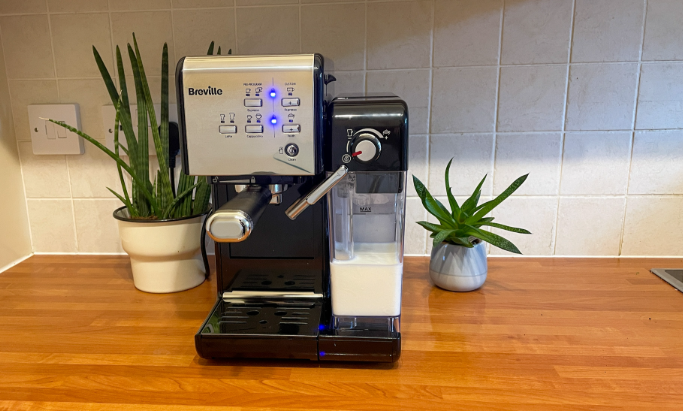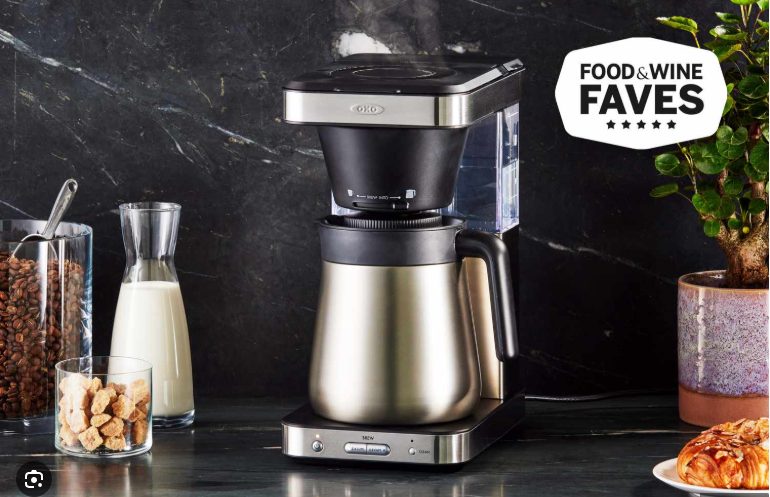When it comes to brewing the perfect cup of coffee at home, the debate of coffeemaker vs French press is a classic one. Each method offers unique advantages, flavors, and experiences, but which is right for your lifestyle? Whether you value convenience or crave hands-on control, understanding the coffeemaker vs French press comparison will help you make an informed choice. In this comprehensive guide, we’ll break down the pros and cons of both, covering everything from coffeemaker setup and coffeemaker maintenance to French press techniques and flavor profiles. By the end, you’ll know which brewing method aligns with your coffee preferences. For more brewing insights, explore our coffee guide.
Overview: Coffeemaker vs French Press
A coffeemaker is an electric or battery-powered appliance that automates coffee brewing, typically using drip, pod, or espresso methods. A French press, on the other hand, is a manual device that steeps coarse coffee grounds in hot water before pressing them through a metal mesh filter. The coffeemaker vs French press debate hinges on factors like ease of use, flavor quality, cost, and maintenance. While coffeemakers excel in speed and consistency, French presses offer rich, full-bodied coffee with hands-on appeal. Let’s dive into the details to see how they stack up.
Pros and Cons of a Coffeemaker
Coffeemakers are a staple in many kitchens, offering a range of options from budget drip models to advanced espresso machines. Here’s a closer look at their advantages and drawbacks in the coffeemaker vs French press comparison.
Pros of a Coffeemaker
- Convenience: Coffeemakers automate brewing with features like programmable timers, allowing you to wake up to fresh coffee. How to use a coffeemaker is often as simple as adding water, grounds, and pressing a button.
- Consistency: Machines maintain precise water temperatures (ideally 195°F–205°F) and brewing times, delivering uniform results every time. This is ideal for those who value predictability.
- Versatility: From single-serve pods to 12-cup carafes, coffeemakers cater to various needs. Some models offer adjustable brew strengths or iced coffee settings.
- Capacity: Perfect for families or offices, many coffeemakers brew multiple cups at once, unlike the French press’s smaller yield.
- Minimal Effort: No manual stirring or timing required, making it a time-saver for busy mornings.
Cons of a Coffeemaker
- Initial Cost: Even budget models start at $50–$100, with high-end options exceeding $300. Coffeemaker maintenance also adds costs for filters or descaling solutions.
- Maintenance Needs: Regular coffeemaker cleaning is essential to prevent mineral buildup or stale oils, requiring monthly descaling and daily rinsing.
- Space Requirements: Larger models take up counter space, though portable coffeemaker options exist for smaller setups.
- Electricity Dependency: Coffeemakers need power, limiting use during outages or camping unless battery-powered.
- Less Control: While some models offer customization, they can’t match the hands-on precision of a French press.

Pros and Cons of a French Press
The French press is a beloved manual brewing method, prized for its simplicity and bold flavors. Here’s how it fares in the coffeemaker vs French press showdown.
Pros of a French Press
- Rich Flavor: The French press’s immersion brewing extracts oils and sediments, producing a full-bodied, robust coffee with complex flavors.
- Low Cost: Starting at $20–$50, a French press is far cheaper than most coffeemakers, with no ongoing filter costs.
- Portability: No electricity needed, making it a true portable coffeemaker for camping, travel, or off-grid use.
- Control Over Brewing: Adjust steeping time (typically 4 minutes) and grind size to tailor flavor, appealing to coffee purists.
- Simple Design: With only a beaker, plunger, and mesh filter, it’s easy to use and clean, requiring minimal coffeemaker maintenance.
Cons of a French Press
- Manual Effort: Brewing requires boiling water separately, measuring grounds, and timing the steep, which can feel tedious compared to how to use a coffeemaker.
- Inconsistency Risk: Without precise water temperature or timing, results vary. Over-steeping can lead to bitter coffee.
- Limited Capacity: Most French presses yield 4–8 cups, less practical for large groups than a coffeemaker’s carafe.
- Sediment in Brew: The mesh filter lets fine particles through, which some find gritty compared to a coffeemaker’s paper filters.
- Fragility: Glass models can break if mishandled, though stainless steel options are more durable.
Flavor Comparison: Coffeemaker vs French Press
Flavor is a key factor in the coffeemaker vs French press debate. Coffeemakers, especially drip models, produce clean, smooth coffee by filtering out oils and sediments through paper or reusable filters. This results in a lighter body, ideal for those who prefer clarity over intensity. Models with SCA certification ensure optimal extraction, but the flavor can feel less dynamic than a French press.
A French press, by contrast, delivers a richer, bolder cup due to its immersion method. The metal mesh filter allows natural coffee oils and fine particles to remain, enhancing mouthfeel and complexity. For dark roasts, this creates a deep, chocolatey profile; for light roasts, it highlights fruity notes. However, improper technique can lead to bitterness or sediment-heavy brews, unlike the consistent output of a coffeemaker.
To optimize flavor with either method, use fresh, medium-coarse grounds for French press or medium for drip coffeemakers, and maintain a 1:16 coffee-to-water ratio. For coffeemakers, explore our brewing tips to fine-tune settings.
Coffeemaker Setup and French Press Brewing Guide
How to Use a Coffeemaker
Mastering how to use a coffeemaker is straightforward:
- Setup: Fill the reservoir with filtered water, add grounds to the filter basket (1–2 tablespoons per 6 ounces), and secure the carafe. For coffeemaker setup, run a water-only cycle first to clean internals.
- Brew: Select brew strength or size, then press start. Programmable models let you set timers for automatic brewing.
- Tips: Preheat the carafe for hotter coffee, and use fresh grounds to avoid flat flavors.
How to Use a French Press
Brewing with a French press requires more hands-on effort:
- Prepare: Boil water to 195°F–205°F (just off boil). Add coarse grounds to the beaker (1:15 ratio, about 1 tablespoon per 4 ounces).
- Steep: Pour hot water over grounds, stir gently, and steep for 4 minutes. Press the plunger slowly to filter.
- Tips: Use a timer to avoid over-extraction, and pour immediately to prevent bitterness.
Coffeemaker Maintenance vs French Press Cleaning
Coffeemaker maintenance is more involved than French press care:
- Coffeemaker Cleaning: Rinse carafe and filter basket daily. Descale monthly with a vinegar-water solution (1:1) to remove mineral buildup, followed by 2–3 water cycles. Wipe exteriors to prevent grime. Neglecting coffeemaker cleaning leads to clogs or off-flavors.
- French Press Cleaning: Disassemble the plunger and rinse all parts after use. Scrub the mesh filter to remove oils. No descaling needed, but occasional deep cleaning with baking soda prevents residue. Dishwasher-safe models simplify upkeep.
French presses win for low-maintenance ease, while coffeemakers require consistent coffeemaker maintenance to perform optimally.

Coffeemaker Troubleshooting vs French Press Issues
When problems arise, coffeemaker troubleshooting and French press fixes differ:
- Coffeemaker Issues: Weak brews stem from clogged filters or improper ratios; descale or adjust grounds. Leaks indicate loose seals or overfilled reservoirs. Error codes may require resets—unplug for 10 minutes. Check our coffee guide for detailed fixes.
- French Press Issues: Bitter coffee signals over-steeping; stick to 4 minutes. Gritty brews mean too-fine grounds; switch to coarse. Hard-to-press plungers suggest overfilled beakers or clogged mesh—clean thoroughly.
Coffeemakers face more technical issues due to electronics, while French press problems are technique-based and easier to resolve.
Coffeemaker Safety vs French Press Safety
Coffeemaker safety involves electrical precautions:
- Unplug when not in use to avoid shocks or fires.
- Keep away from water sources and use stable surfaces.
- Handle hot carafes with mitts and use auto-shutoff features.
French press safety focuses on handling:
- Use heat-resistant glass or stainless steel to avoid cracks.
- Pour boiling water carefully to prevent burns.
- Ensure the plunger is secure to avoid spills.
Both require care, but coffeemakers demand more vigilance due to power usage.
Which Is Right for You? Coffeemaker vs French Press
Choosing between a coffeemaker vs French press depends on your priorities:
- Choose a Coffeemaker If: You need convenience, brew for multiple people, or prefer automated consistency. Ideal for busy schedules or offices. Budget models start at $50, with advanced options at coffeemakert.com.
- Choose a French Press If: You love bold, hands-on brewing, have a tight budget, or need a portable coffeemaker for travel. Perfect for solo drinkers or flavor enthusiasts.
Consider kitchen space, brewing frequency, and flavor preferences. If you brew daily for a crowd, a coffeemaker’s capacity wins. For occasional, rich cups, a French press shines.
Cost and Sustainability Considerations
Cost: French presses are cheaper upfront ($20–$50) with no ongoing costs beyond coffee. Coffeemakers range from $50–$300, with expenses for filters, pods, or descaling solutions. Over time, coffeemakers save money vs. cafe visits but require more investment than a French press.
Sustainability: French presses are eco-friendly, using no electricity or disposable filters. Coffeemakers with reusable filters are greener, but pod machines generate waste unless using recyclable capsules.
Conclusion: Coffeemaker vs French Press—Your Perfect Brew Awaits
In the coffeemaker vs French press debate, both methods have unique strengths. Coffeemakers offer convenience, consistency, and capacity, ideal for busy households but require regular coffeemaker maintenance and power. French presses deliver bold, customizable flavors with minimal cost and upkeep, perfect for hands-on brewers or travelers seeking a portable coffeemaker. By mastering how to brew coffee in a coffeemaker or perfecting French press technique, you can elevate your coffee game. Not sure which to choose? Visit coffeemakert.com for more coffeemaker tips and find the brewing method that’s right for you!